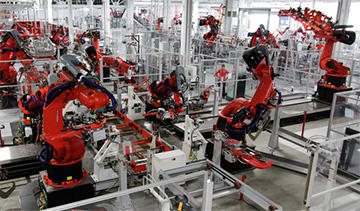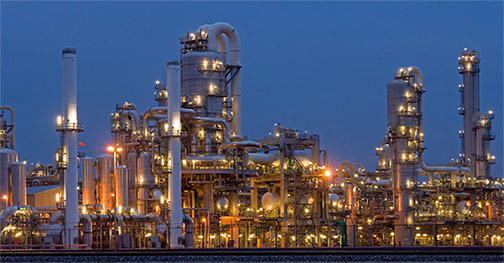Summary
Wireless communication is a key enabling technology for the implementation of advanced manufacturing systems. Factory operators aim to improve visibility and control of their operations in ways that previously were too cost-prohibitive to realize with wires. Wireless technology creates enormous potential for manufacturers by increasing the monitoring and control surface of their physical processes, reducing installation and maintenance costs, and expanding the business agility of their technical operations. However, there are technical challenges to enabling the fine resolution monitoring, optimization, and control necessary to enable these wireless factory communications including reliability, latency, and security. To address these challenges, the Wireless Systems for Industrial Environments (WSIE) research team will deliver comprehensive guidelines in the selection, deployment, and optimization of existing wireless technologies in manufacturing environments while advancing the development of new protocols for future automation systems. Manufacturers will benefit from a standardized selection and measurement methodology that can assure that the wireless platforms for their applications will achieve desired performance requirements and efficiency.
Description

Objective: The Wireless Systems for Industrial Environments (WSIE) project will deliver comprehensive, measurement science-based guidelines in the selection, deployment, and optimization of the wireless technologies in specific manufacturing environments; and research that advances the state of technology of wireless-based automation systems in which time, reliability, energy, and scale are joint considerations.

Technical Idea: Industrial wireless communications must overcome specific technical challenges as compared to wired modes of communications before it can become ubiquitous in the factory. Challenges include identification and evaluation of the wireless technologies currently available for automation use, and the selection and evaluation methods of those technologies. Technical challenges include time synchronization difficulties, reliability, and latency determinism, resilience to interference and other transmission security vulnerabilities, and the ability to resolve interference impacts rapidly through real-time spectrum monitoring and automation system integration. In order to address these objectives, we will accomplish the following:
- Understand the Radio Environment: Measure select factory radio frequency environments using precision measurement equipment to study electromagnetic propagation and interference patterns;
- Conduct Laboratory Measurements: Create measurement science-based methodology for assessing the performance of continuous and discrete manufacturing systems where wireless is used as the primary communications mode;
- Guidelines for Wireless Deployment: Develop guidelines that will facilitate the deployment of wireless technologies in the smart manufacturing environment; and
- Future Manufacturing Systems: Address advanced manufacturing systems with time-critical (<10 μsec), high-reliability aspects (Error rates < 10-8), in harsh and dynamic electromagnetic environments such as metal-working machine shops and automotive or aerospace assembly plants. These environments would occur in factories where precisely-timed or rapid manufacturing processes are in use.
Research Plan: Our research will be conducted in multiple overlapping phases. Phase 1 is the radio frequency (RF) measurement phase in which the RF environment in factories is assessed through active and passive measurements. Phase 2 entails the quantification of the factory RF environment as a parameterized statistical channel model representation. Phase 3 is the study of the cyber-physical impacts of the wireless network on the physical systems through simulation. Phase 4 is entails the use of testbed methodologies to study realized wireless networks on physical process performance. Phase 5 is the development of a set of guidelines for selecting and deploying wireless technologies in manufacturing environments.
Phase 1 Understand the Radio Environment
This project will begin with the fundamentals of wireless technology. While effective wireless standards for wireless sensor networks such as IEEE 802.15.4 have been developed by industry, few studies focus on the impact of the industrial RF environment or the chosen wireless networking technology on plant performance. Using modern state-of-the-art RF sounding techniques, we will measure RF propagation in partner manufacturing facilities such as an automotive assembly plant or chemical manufacturing plant. We will also measure sources of RF interference and attempt to correlate those interference sources with the happenings of plant operations. This phase of the project will produce high volumes of data on the order of hundreds of gigabytes. We will post-process the raw data to produce complex-valued correlations (impulse responses) that represent the block-box propagation losses and distortions of each sounding scan. The data will be made available for download.
Next we will encapsulate of the RF measurement data into a convenient statistical model. Well-established models exist for RF propagation. We expect that the measurement data of phase 1 to fit within one of the many standard channel models; however, the standard models require precise parameterization to accurately characterize RF propagation in the factory. The channel models will then inform the simulations and testbed activities of subsequent phases. In addition to channel models, we will also produce packet error rate curves for various IEEE 802.15.4 receiver types. The output of this phase will include packet error rate curves and parameterized channel models.
Phase 2 Conduct Laboratory Measurements
Laboratory experiments will be conducted in simulation and with real-world hardware. Using the raw impulse response data, channel models, and packet error rate curves, we will develop detailed network simulations integrated with models of physical processes. These integrated simulations will allow us to study the impacts of the RF environment and wireless networking technologies on the performance of physical plant processes. We will experiment with both continuous and discrete process control.
We will then continue our network simulations by realizing the network with both virtual and actual wireless networking hardware and automation infrastructure representing various network and control implementations found in factories. We will refer to this as our wireless testbed. The testbed will include continuous processes as well as models of high speed manufacturing processes that involve safety and feedback control over the wireless medium. Rather than abstract radio frequency (RF) propagation and interference to packet error rate curves, we will recreate the factory RF environment using an RF channel emulator. The RF emulator is a complex laboratory device that introduces electromagnetic amplitude, phase, and delay distortions by applying a high-speed digital tapped-delay filter to RF transmissions on a link-by-link basis.
Phase 3 Guidelines for Wireless Deployment
In collaboration with universities and industry partners, we will produce a NIST publication that may be used by industrial operators, system integrators, and device manufacturers to support the effective use of wireless technologies in manufacturing systems. The guidance specified will be based on the measurements and experimentation conducted as a part of our research. The document will be made freely available.
Phase 4 Future Manufacturing Systems
In collaboration with selected participants through grants, cooperative agreements, and small business innovation opportunities, we will advance industrial wireless communications through multi-objective optimization of existing or novel wireless protocols that account for both network and physical process considerations.
Major Accomplishments
Some recent accomplishments for Wireless Systems for Industrial Environments:
- Produce a Simulation framework to measure the performance of continuous processes where wireless is deployed.
- Field measurements and channel models is applied to optimize wireless technology selection and configuration in factories.

